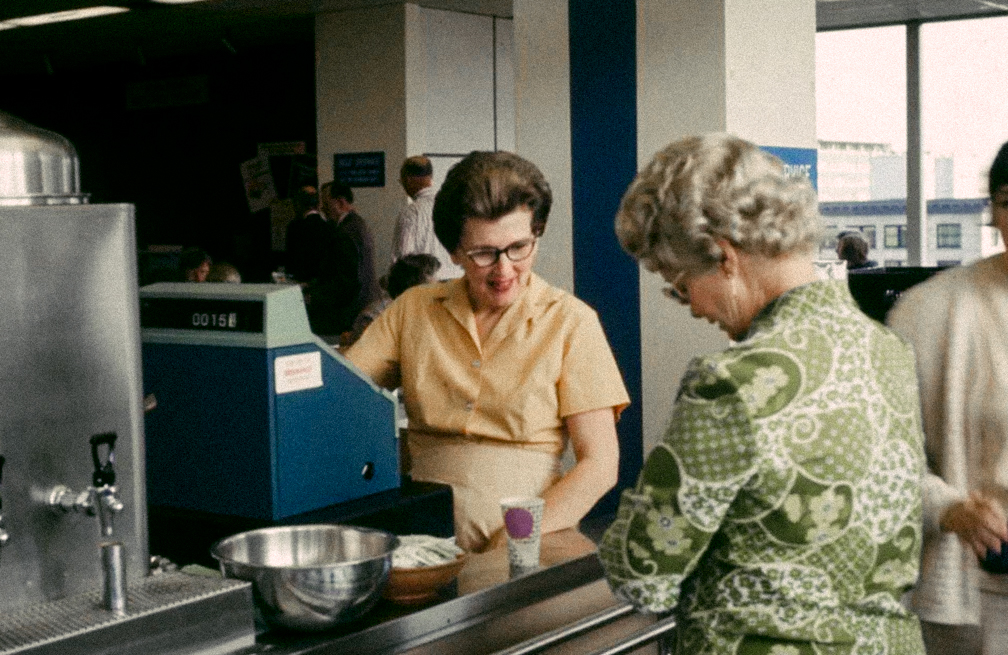The Implications of a Cashless Checkout

TWO CENTS | OCT 22, 2020
Eat Your Greens!
(Just Pay with Plastic.)
There’s more to a cashless checkout than convenience and speed.
I love Sweetgreen. I love the rotating menu boasting seasonal ingredients. I love the window into the prep area and the blackboard listing the local farms from where their produce and cheese are sourced. And I love the quick, friendly service and ample seating I always find at the location I frequent on the Upper East Side.
But I decided to stop eating there after reading about several cities’ attempts to ban merchants from declining to accept cash.
I was originally all in-favor of the cashless store trend. I never carry cash and it made me feel futuristic — checking out with my grain bowl in a queue full of customers swiping cards and phones. Five whole seconds saved from change-handling! Cash is the dirtiest thing you own!
But settling for lunch at a Dig Inn around the corner, I was disappointed (but not surprised) to find that the other high-flying fast casual peddler of the green and the good had also recently adopted the policy. In a rush, I decided to devour one final bowl of base + protein + 3 greens. As I was tweeting my outrage between bites of roasted cauliflower and kale caesar, a young Black man was touring the tables asking for spare change.
Another stark contrast of opportunity in a city filled with them. But what’s more: as my privileged liberal indignance was reducing my options for convenient, healthy eating in the neighborhood, this man’s choices were being cut down by forces outside of his control.
As the supporters of the ban on cashless stores point out, Americans without a bank account are much more likely to be Black or Latino than white. So turning away customers who can only pay with cash is tantamount to discrimination not just on the basis of social status, but by race as well. The stores are no-go zones for immigrants and many poor people of color.
It should not be seen as a coincidence that the same stores that frown on cash are those enlightened, locavore denizens of so-called “clean eating” (a phrase that caused another ruckus recently when a white nutritionist opened a healthy Chinese restaurant, a concept she had considered oxymoronic anywhere else). Customers of Sweetgreen and their ilk expect organic veggies and blond wood decor, as well as to be surrounded by patrons who look like them. “Panhandling? That’s why I’m not at McDonald’s.”
Earlier this year, just weeks before New York City recorded its first COVID-19 infection, the City Council passed a bill outlawing the practice of retailers and food establishments refusing to accept cash. Enforcement is set to begin this November. But like so much else, the pandemic has thrown the new law up in the air; businesses everywhere are worried about the possible transmission of the virus on banknotes, even if the science is inconclusive.
New York City followed in the footsteps of San Francisco, whose Board of Supervisors voted to outlaw cashless stores last year. In San Francisco, the cashless store model goes hand in hand with another worrying trend for immigrants and the service worker underclass: the (almost) entirely staff-less restaurant. That such automation of previously human work is taking root in techno-utopian San Francisco is no coincidence.
Last year Amazon opened its first Go concept store in New York City, which also happened to be the first of its 11 locations to accept cash. The New York Times article covering Amazon’s New York City opening interviewed a handful of shoppers who said they were concerned about the impact of the cashierless model on the city’s mom-and-pop businesses, especially its ubiquitous bodegas.
That concern is a reminder of another outcry back in 2017 regarding the debut of a souped-up vending machine calling itself Bodega that aims to replace your neighborhood corner store by stocking essentials like Oreos and tampons. So when disrupting an analog institution isn’t enough, do it with an appropriation of the immigrant culture that created it. (That venture, though extant, has since rebranded.)
The bodega, besides being both employer of and vital food supplier to New York’s vulnerable, is a key social space in almost every neighborhood in the city. It’s where harried commuters grab their bacon, egg & cheese in the morning, kids scramble loudly for candy after school, and immigrant workers bond over beers after work.
I don’t see vending machines or cashier-free stores making this business model obsolete overnight, but the old-fashioned corner store is a democratic space in a way that cashless eateries decidedly are not. And in big cities where low income residents consistently overrepresent in public health outcomes like asthma, diabetes and obesity, to restrict healthy eating options to the well-off is not only exclusionary, it’s perpetuating a crisis of health inequality.
The coronavirus pandemic has brought this inequality into stark relief. Not only are low-income Americans more likely to die of COVID-19, they’re much more likely to face food insecurity as a result of the ensuing economic contraction, especially since federal help dried up over the summer. But the pandemic has also sparked some encouraging food trends—and I’m not talking about sourdough starter or banana bread. Diners have become much more enthusiastic about supporting their local mom-and-pop establishments, and mutual aid groups have sprouted up to collect and distribute food to the neediest. As horrendous as COVID-19 has been, it might at least be encouraging us to have more honest discussions about who gets to benefit from healthy food and healthcare access. No amount of green could buy that.
-
Alexander McQuilkin is a full-time bureaucrat in New York City’s housing agency, and a part-time writer and wino.
SIMILAR ARTICLES




